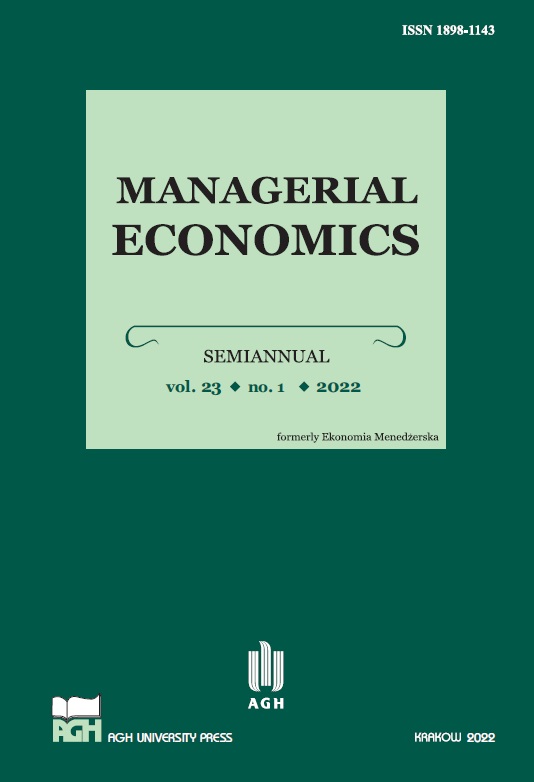Changes in the quality of bank loan portfolios in EU countries – with the particular case of Poland
DOI:
https://doi.org/10.7494/manage.2022.23.1.27Abstract
As non-performing loans (NPLs) can cause monetary crises that may turn into financial crises affecting an entire economy, monitoring them is very important. If NPLs are not identified and recognized efficiently, both in terms of speed and scope, NPL resolution effectiveness is undermined, which in turn will have negative effects on the banking sector and ultimately on GDP growth.
The main aim of this article is to identify changes in the quality of bank loan portfolios in European Union (EU) countries in 2009–2021, using an example of the Visegrad Group (Czech Republic, Poland, Slovakia, Hungary) as well as France and Germany. Keeping in mind the fact that the share of loans to households in EU portfolios is approximately 60%, it has a significant impact on the share of non-performing loans (NPL) in a bank’s entire portfolio. Therefore, it is important to identify macroeconomic determinants influencing the creditworthiness of households and their loan servicing capacity.
The specific aims are, first, to present the differences in NPLs, debt servicing costs, and the structure of loan portfolios in the selected EU countries. Second, to identify countries with high-quality portfolios and those undertaking restructuring. Thirdly, to examine the determinants of NPL for household loans based on the example of Poland, i.e., a country considered representative in terms of the average level of NPL and the portfolio structure in the group of countries studied.
This chapter presents the changes of NPLs, debt service ratio, and household loans in selected EU countries in 2009–2021. Moreover, an NPLs econometric model for Poland is constructed, which considers the main factors determining the creditworthiness of households, i.e., macroeconomic factors, financial standing, and debt servicing costs. Tools such as the VECM model, the variance decomposition and the impulse response functions are used. The results for Poland confirm that the NPLs ratio for households was the strongest explanation of previous changes in own NPL, consumption and real wages in the household sector in 2009–2021.
Downloads
Downloads
Published
Issue
Section
License
Download, sign, scan and attach copyright statement form.

